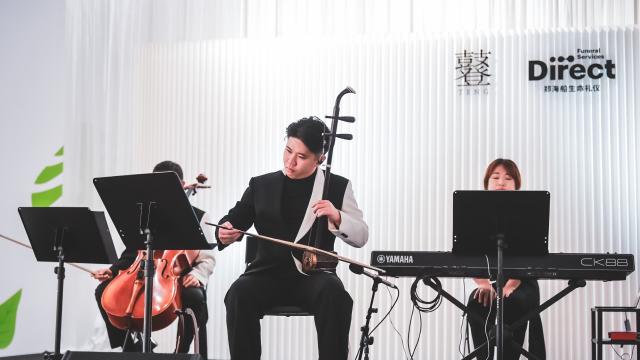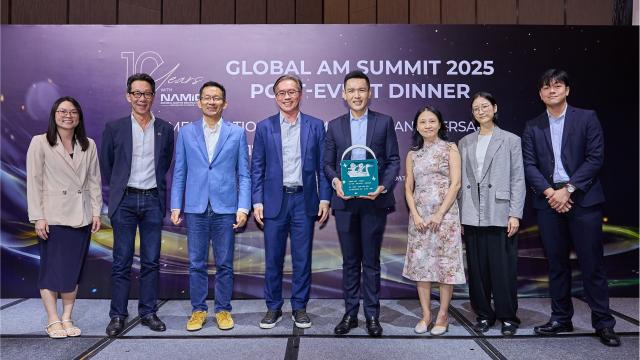An innovative cooling system that makes it a breeze to live an eco-friendly lifestyle won this research team the inaugural SIT Applied Research Excellence Award.
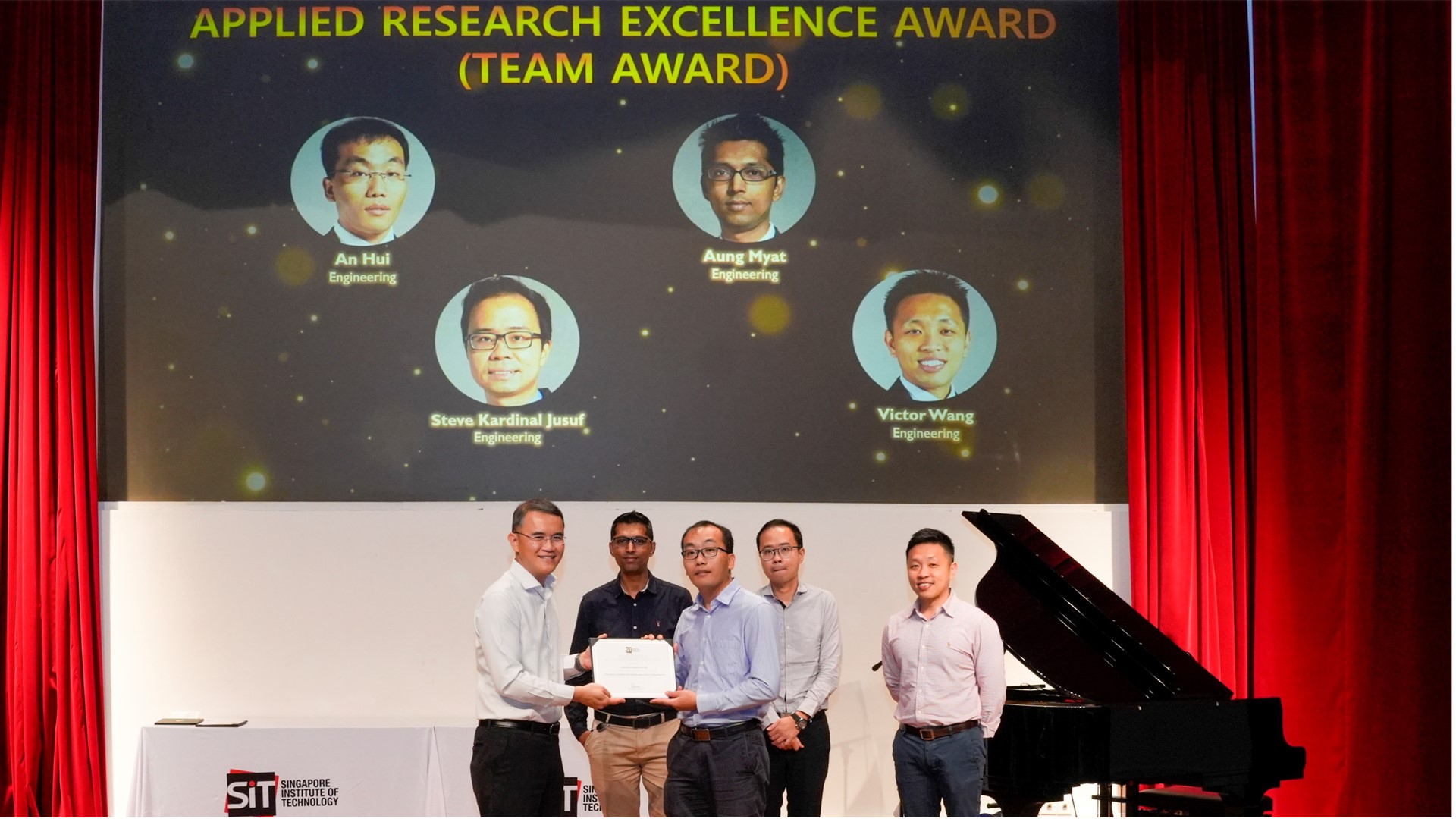
Professor John Thong, Deputy President (Academic) and Provost (extreme left) presented the SIT Applied Research Excellence Team Award to the winning team, comprising (second from left) Associate Professors Aung Myat, An Hui, Steve Kardinal Jusuf, and Victor Wang.
During the COVID-19 pandemic, restrictions were placed on group sizes to limit the spread of the disease. For many, it meant social gatherings were curtailed. This was also bad news for Associate Professor Steve Kardinal Jusuf but, for scientific rather than social reasons. His team’s research on a new cooling technology required people in the room to test its effectiveness.
“The main challenge of the project was related to restrictions during COVID-19. There was a limitation on how many people could be inside the room,” he said.
It was crucial that people were present as the passive displacement cooling (PDC) system he was testing relies on the heat from human bodies to circulate the cool air. Through PDC, heat from occupants and objects, such as computers, will cause warm air to rise and displace the cooler air from the system. This continuous cycle of natural convection will cool the room, eliminating the need for mechanical fans.
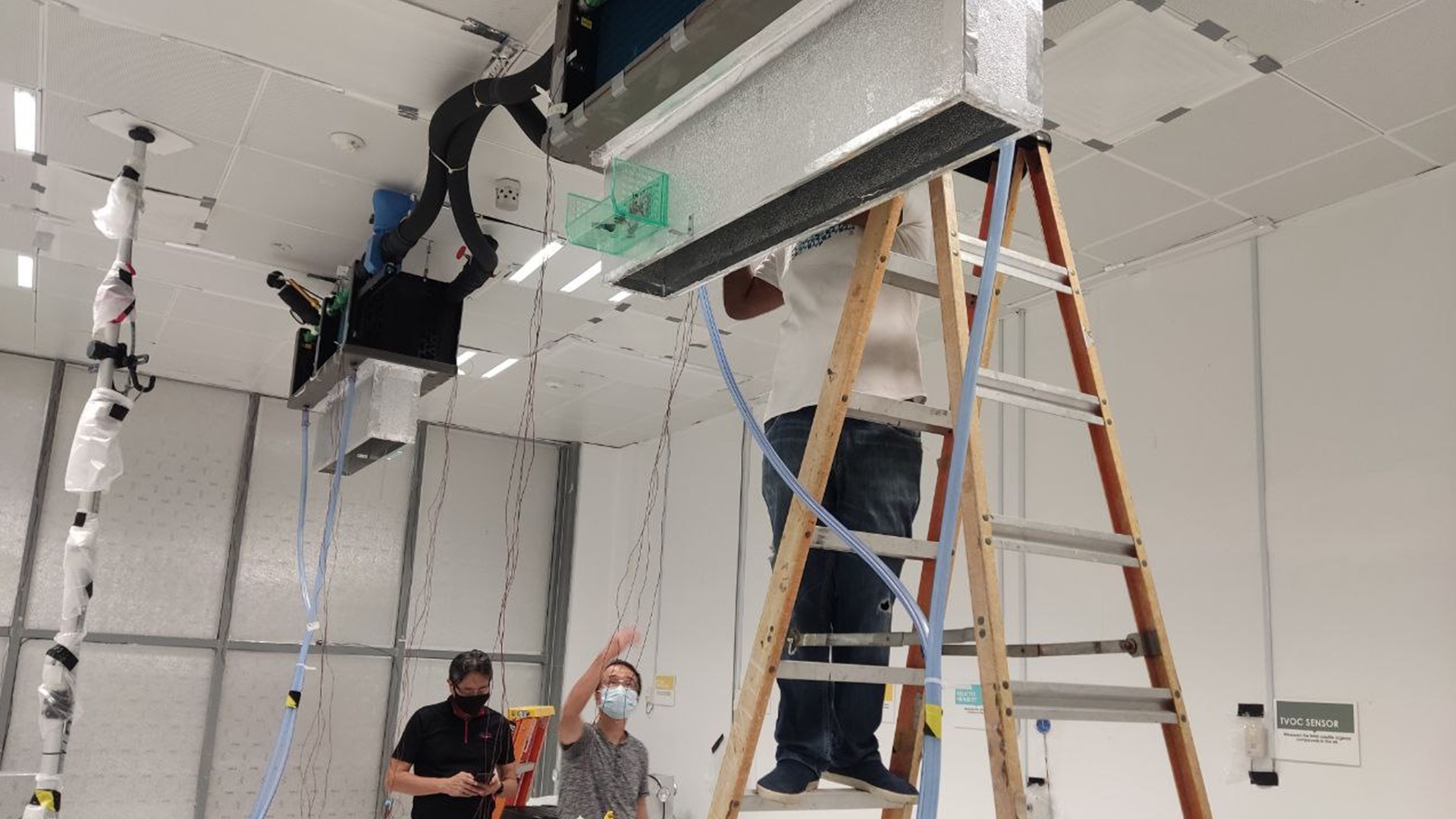
A/Prof Steve Kardinal Jusuf and his team setting up the Passive Displacement Cooling (PDC) system at the BCA (Building and Construction Authority) SkyLab. (Photo: Steve Kardinal Jusuf)
It took four years for the team to present their findings, which resulted in them winning the SIT Applied Research Excellence Reward in 2023. The findings provided inputs to the Technical Reference by Singapore Standards Council and were published in high-impact journals. It is no wonder the technology is making waves – cooling systems consume almost half of a building’s energy in commercial buildings, while a quarter of electricity in Singapore homes is used for air-conditioning.[1] A/Prof Jusuf’s research on the eco-friendly PDC could help cool buildings more efficiently in Singapore.
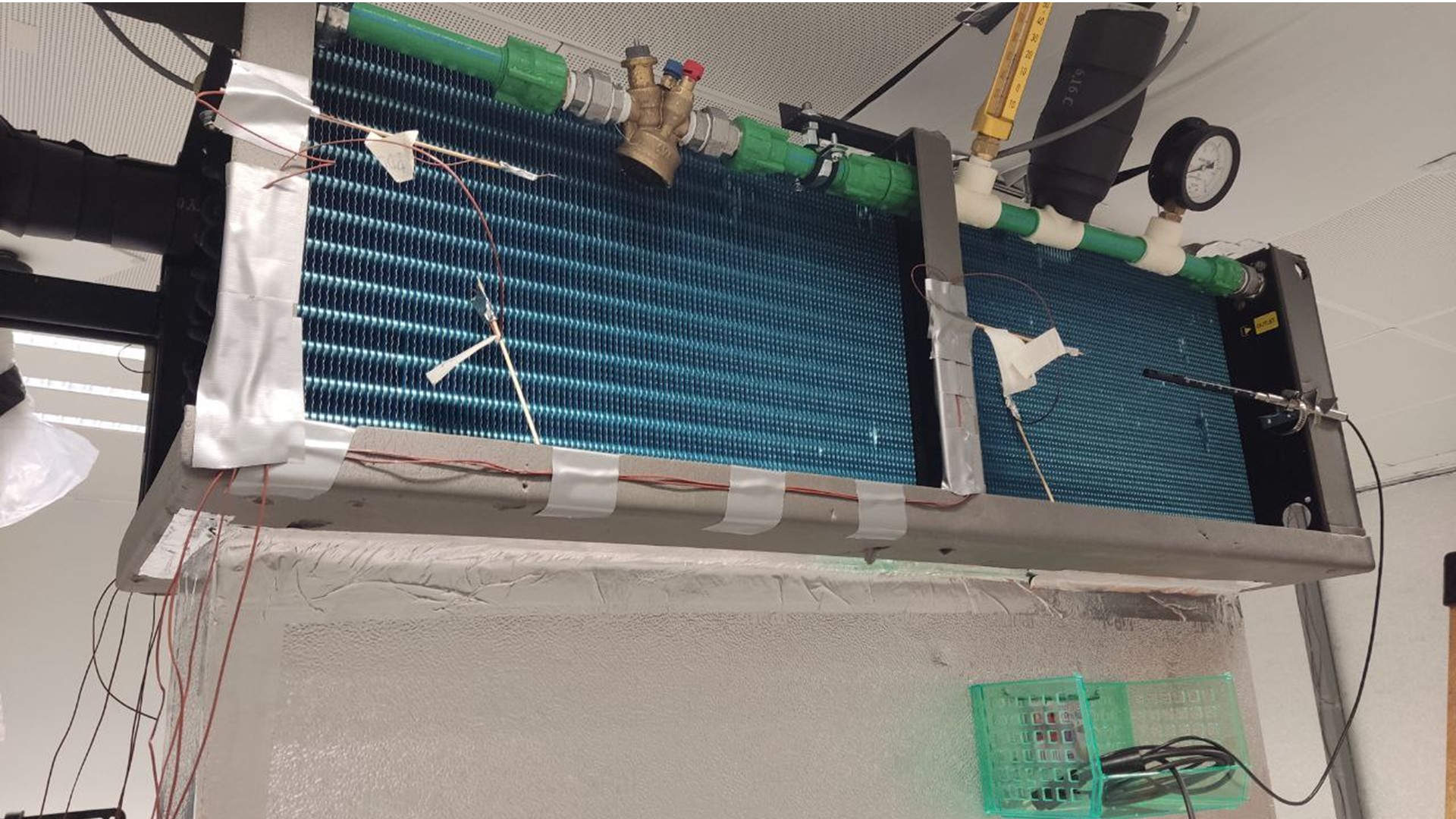
Completed setup of a Passive Displacement Cooling (PDC) unit. (Photo: Steve Kardinal Jusuf)
“The temperature across zones could be different if the office is big,” said A/Prof Aung Myat, a member of the PDC research team. “You and your friend could be sitting in different corners, and the temperature may not be the same.”
This is not just uncomfortable for users but energy inefficient. The PDC allows for more control points and a programmable thermostat, resulting in zone-based localised cooling or a more even cooling effect without the need for complex ducting, vents and adjustments to the airflow. This is unlike conventional cooling systems, where air is typically distributed through a network of ducts and vents in the ceiling to reach different areas of a building. Therefore, conventional cooling systems require a lot of installation of infrastructure and airflow adjustment in each room or zone to achieve the desired cooling.
“The potential savings in energy and cost of the PDC are substantial. We expect up to 40 per cent cost savings for a small office space about half the size of a four-room flat,” said A/Prof Jusuf.
Another significant aspect of the PDC is its ‘quietness’. This is because it has no mechanical fan or blower, relying solely on natural convection for the cool air to flow into the room from the building’s central chiller plant. Only two pipes are required overhead for the return and supply of chilled water.
“This frees up more ceiling space and increases floor-to-ceiling height,” said A/Prof Jusuf. The absence of damage-prone moving parts like fans is also a boon in maintenance. In fact, the PDC may require much less upkeep because it does not have fans that will suck dust from the room into the coil.
Can the Industry Warm Up to It?
The technology is promising and the PDC has already been used in buildings at the Singapore Management University and Nanyang Technological University. The new SIT Punggol Campus will also incorporate the system at its Super Low Energy building. However, there are challenges preventing its wider adoption. For one, the initial higher capital expenditure may be a deterrent for building owners, as with many environmentally-friendly alternatives.
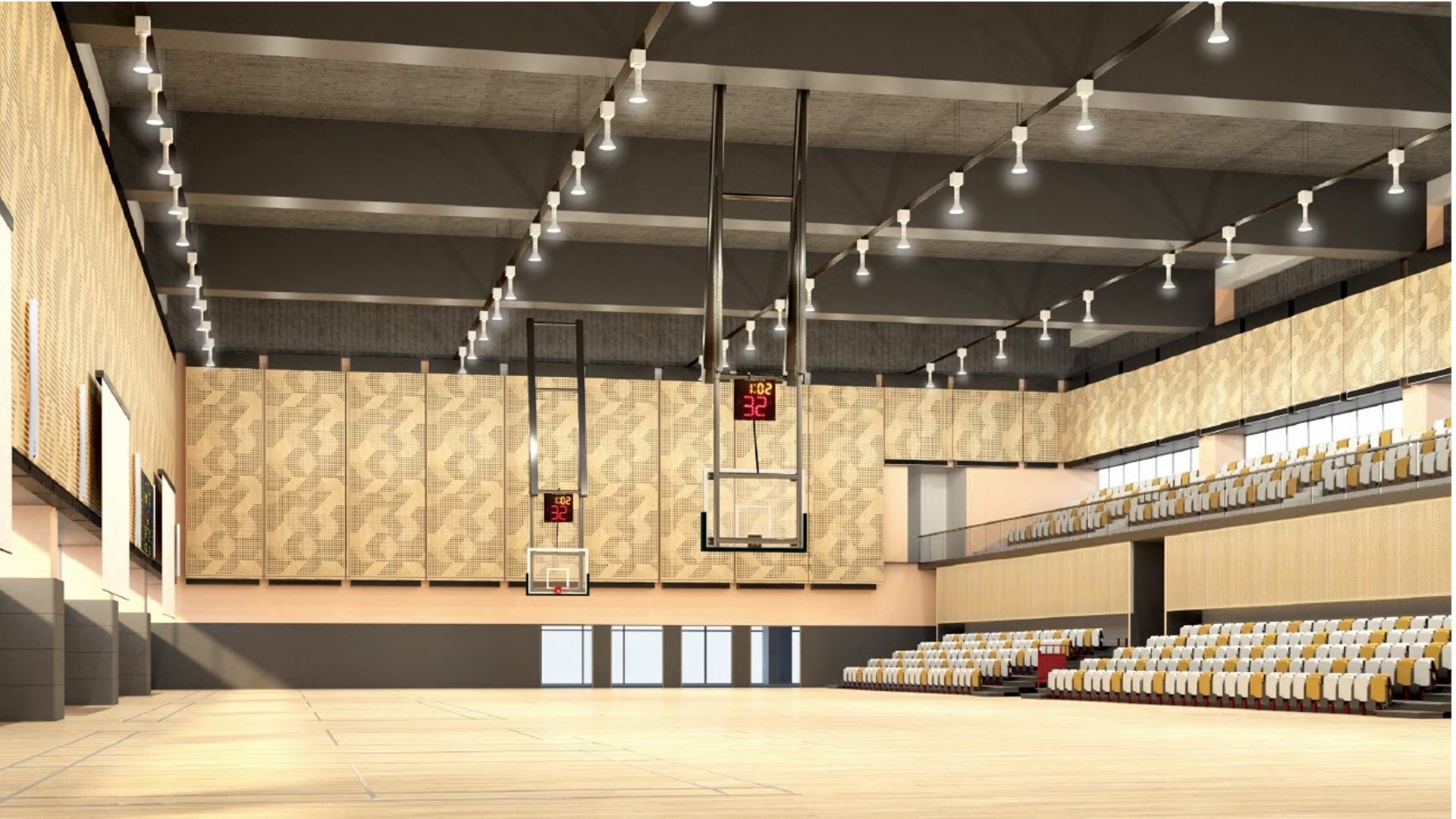
The Multi-Purpose Hall (MPH) at the upcoming SIT Punggol Campus adopts a passive displacement ventilation model for efficient cooling and uses shading devices on windows extensively to achieve high solar heat reduction.
“Wider adoption of this system could lower costs over time. You need to look at the whole life cycle of the building and calculate carbon emissions,” said A/Prof Jusuf, who hopes that changes in green regulation may also spark the shift to the PDC.
Exciting possibilities await as we anticipate the adoption of this system in commercial settings, with the potential for integration into residential district cooling systems. Achieving this vision of implementing more efficient and sustainable cooling solutions will require a collective shift in the mindsets of occupants, building owners, and maintenance personnel. For instance, users would have to get used to a cooling system with lower airflow, or facilities managers would have to learn how to maintain the PDC system. A/Prof Jusuf highlighted the significance of the Technical Reference (TR) they had contributed. The TR establishes a common methodology for specifying, verifying and evaluating PDC systems in order to encourage designers and users to adopt them and thus, accelerating their adoption.
“We are also looking at markets in neighbouring countries, like Indonesia,” he said.
The PDC looks set to heat up the race to be cooler and greener, which can only be a good thing amid climate concerns.
[1] https://www.channelnewsasia.com/commentary/air-con-unit-electricity-energy-carbon-emissions-climate-change-1339326















![[FA] SIT One SITizen Alumni Initiative_Web banner_1244px x 688px.jpg](/sites/default/files/2024-12/%5BFA%5D%20%20SIT%20One%20SITizen%20Alumni%20Initiative_Web%20banner_1244px%20x%20688px.jpg)
